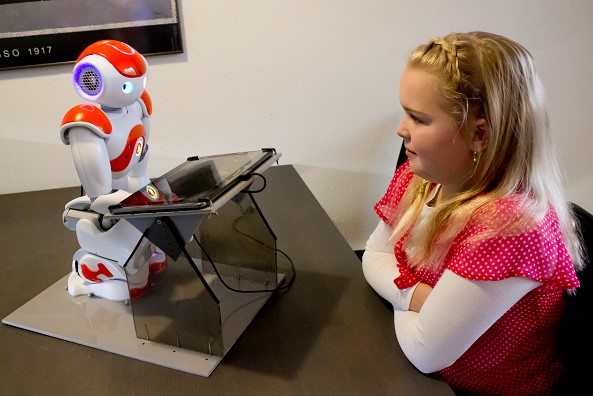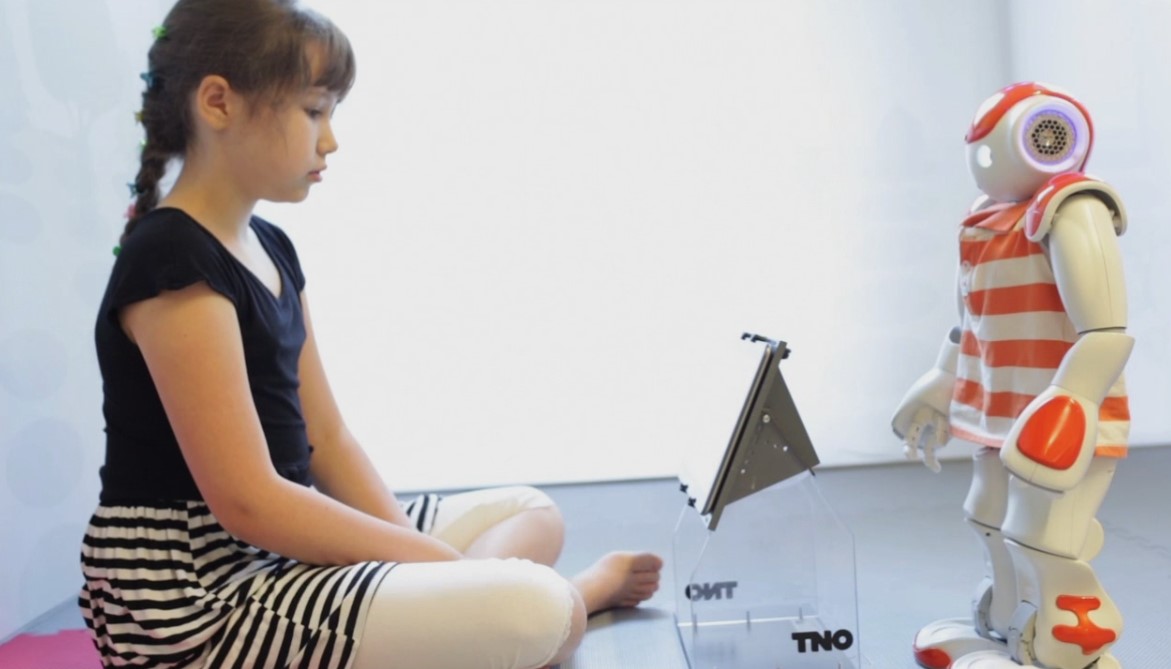Social robots can motivate children into better managing their diabetes. But it’s hard to match aspirations with capabilities, finds Dr Rosemarijn Looije.
Experimental session at TNO with Alize robot. (Photo: TNO)
Lees dit artikel in het Nederlands
Type I diabetes in children requires disciplined self-management in order to actively balance the blood sugar level between meals and activities. Robots can motivate children to learn about their disease and how to best handle it.
In an ideal word, the doctor sets goals with the child and uses a robot to do a quiz with the kid, while talking to the parents. At home, an avatar of the robot continues the quiz and keeps the scores. Thus, parents can keep an eye on the child’s goals, activities and blood sugar level. During return visits, the robot welcomes the child by name and continues the educational programme. It will, for example, explain to how avoid hypoglycaemia (low blood sugar).
Dr Rosemarijn Looije, who defended her PhD thesis on this topic last summer, worked at TNO with social robots in the management of type 1 diabetes for 12 years. As a graduate in artificial intelligence (University of Groningen), her main questions were: how can people and social robots work together; and, what effect does a robot have on the social environment?
Buts
A meeting with her yields lively stories full of ‘buts’. Some examples: social chat with the robot helps bonding, but the robots are not very good at it; emotional expressivity makes interaction livelier, but expressions of emotions shouldn’t get predictable; a robot with arms and legs is more attractive to children than a computer screen, but appearance raises expectations. In other words: a robot shouldn’t just sit and talk.
So what can social robots do in terms of patient guidance? Looije quickly comes up with three tasks.
- Testing knowledge (in the form of a game or quiz).
- Encouraging the use of a diary and increasing therapy adherence.
- Providing feedback on set goals.
The analysis of 10 robot games (from ‘sorting’ to ‘helping robot stand up’) has led to an impressive map of the associated effects (competence, trust, enjoyment), methods and instruments.
On a more anecdotal level, Looije has seen that playing with a robot makes it easier for children to talk about their illness. For once the disease brings them something special, fun, and worth looking forward to: a session with the robot.


Outlook
Improving social robots for kids requires better speech recognition and a ‘world view’ to understand what is said. But … kids can be hard to follow sometimes, says Looije. How should you respond to a boy who just needed to say that he was NOT an airplane?
- Rosemarijn Looije, The situated Design Rationale of a social robot for child’s disease management, PhD supervisors Professor Mark Neerincx and Professor Koen Hindriks (Faculty of IDE), 27 June 2019.
Do you have a question or comment about this article?
j.w.wassink@tudelft.nl


Comments are closed.